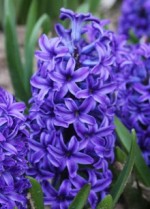 The familiar hyacinth plant appears in spring with its heady fragrance and is loved by some, scorned by others. It became very popular in Holland during the 18th century and over 2,000 cultivars were produced there. Their bright colors and stately appearance make them especially suitable in a formal garden along with narcissus and tulips. Their appearance in the garden belies the myth that explains their origin.
The familiar hyacinth plant appears in spring with its heady fragrance and is loved by some, scorned by others. It became very popular in Holland during the 18th century and over 2,000 cultivars were produced there. Their bright colors and stately appearance make them especially suitable in a formal garden along with narcissus and tulips. Their appearance in the garden belies the myth that explains their origin.
According to the ancient Roman poet, Ovid, in his work the Metamorphosis (Book X, 162-219), the god Apollo was besotted by the youth Hyacinthus, son of the king of Sparta. The two were lovers and spent a great deal of time together hunting and enjoying the countryside. One day they were exercising and when Apollo threw a discus, Hyacinthus ran to retrieve it. Unfortunately, the discus hit Hyacinthus and mortally wounded him. In Ovid’s words,
-
As in a garden, if one breaks a flower,
Crisp violet or poppy or straight lily
Erect with yellow stamens pointed high,
The flower wilts, head toppled into earth,
So bent the dying face of Hyacinthus
Giovanni Battista Tiepolo, a Venetian baroque artist, captured the moment in his painting, Death of Hyacinthus (1752-53).
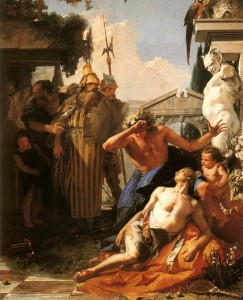
Apollo, wearing a crown of laurel leaves is captured as he comprehends the terrible accident that has befallen his friend.
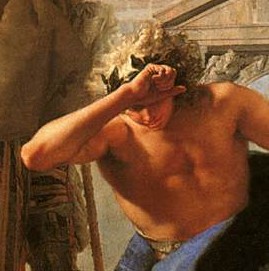
Hyacinthus lies dying on a rich fabric.
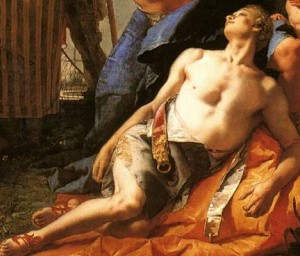
Cupid is present indicating the extreme feeling that unites the two main characters.
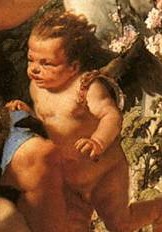
Hyacinthus’ father and retinue, dressed in clothes appropriate to the artist’s time, sees his son dying.

The cypress tree in the background suggests death and mourning.
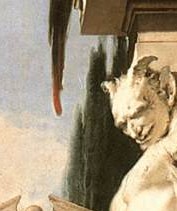
And then, according to Ovid,
-
The blood that filled the grasses at his feet
Turned to brighter dye than Tyrian purple.
And from its lips there came a lily flower.
And yet, unlike the silver-white of lilies,
Its colour was a tinted, pinkish blue.
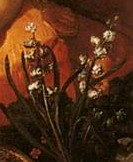
Notice that near the plant is a tennis racket and two balls.
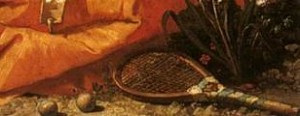
The artist has changed the story by substituting a tennis match for discus throwing. Tennis had become a very popular sport when the artist painted this work.
